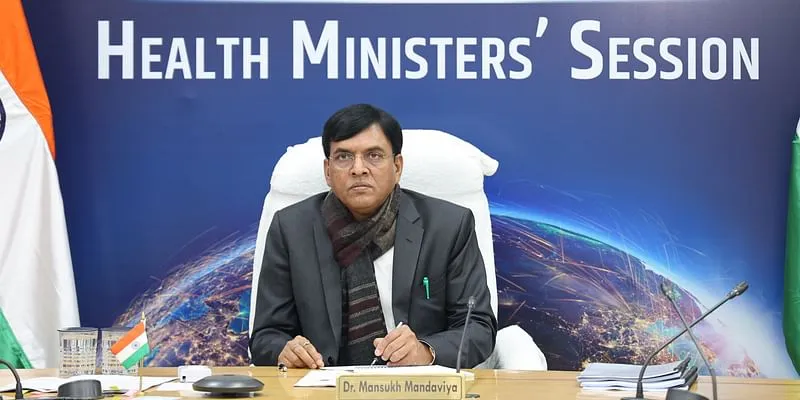Has tighter drug manufacturing enforcement for pharma cos caused safety, viability at stake?
Enforcement of Schedule M (Good Manufacturing Practices) ensures safety in the pharma industry, but it also highlights the need for subsidies and measures to prevent compromising quality due to competitive pricing. The future of India's position as the 'Pharmacy of the World' hangs in the balance.
Health and Family Welfare Minister, Mansukh L Mandaviya’s recent announcement on the phase-wise enforcement of Schedule M for pharmaceutical Micro, Small, and Medium Enterprises (MSMEs) has shaken the industry.
Schedule M, a crucial part of the Drugs and Cosmetics Act of 1940, outlines the Good Manufacturing Practices (GMP) that pharmaceutical manufacturing units in India must follow. Mandaviya’s announcement has stirred up concerns among industry stakeholders, particularly regarding compliance, financial viability, and most importantly, safety.
During the announcement, Mandaviya revealed that a total of 137 firms were inspected, leading to action being taken against 105 firms. Production has been stopped at 31 firms, and cancellation and suspension of product/section licences have been issued against 50 firms.
Additionally, show cause notices have been issued to 73 firms, and warning letters have been issued against 21 firms to ensure the highest quality of pharmaceutical products.
As of April this year, licences of 18 pharma companies were cancelled due to the manufacturing of spurious medicines following an inspection by the Drugs Controller General of India (DCGI), according to ANI.
Dr RN Gupta, Vice President and Divisional Chairman at The Indian Pharmaceutical Association, emphasises that GMPs have been in existence for decades. The work on drafting GMPs for India began in the 1980s, and Schedule M has been periodically revised since then.
Gupta, a highly experienced professional in the pharmacy field, highlights that Schedule M was revised in 2018 but was not implemented. He views the recent announcement as a significant step towards monitoring and tracking pharmaceutical companies, which are involved in a life-saving business that should never be compromised.

Mansukh L Mandaviya, Minister of Health and Family Welfare and Chemicals and Fertilizers
Pharmacy of the world
In the past nine years, the Indian pharma industry has grown steadily at a CAGR (compound annual growth rate) of 9.43%. And its size could increase to $65 billion by 2024 and $130 billion by 2030, according to data from Invest India.
According to an IBEF report, the Indian pharmaceutical sector supplies over 50% of global demand for various vaccines, 40% of generic demand in the US and 25% of all medicine in the UK. The domestic pharmaceutical industry includes a network of 3,000 drug companies and ~10,500 manufacturing units.
While India is considered one of the world’s largest suppliers of low-cost medicines, earning it the moniker of the pharmacy of the world, it has also been in the news over contaminated products.
In 2022, India-made medicines were linked to the deaths of over 60 children in Gambia and about 20 children in Uzbekistan. A World Health Organisation (WHO) investigation had revealed that a total of twenty hazardous medications, originating from India, caused over 200 deaths worldwide
"Non compliance of GMPs in the pharmaceutical sector is a weapon of destruction," says Niraj Kumar Nir, founder and CEO of Baddi-based Aishwarya Healthcare. He further emphasises that setting up a pharmaceutical unit requires substantial investments and a strict licensing process.
However, the licensing process, according to Nir, was made more lenient in the past few years to meet local demand.
This raises the question of whether insufficient funding for pharmaceutical companies to sustain their operations could result in loss of lives.
Strict enforcement of Schedule M for MSMEs would require a significant investment in infrastructure, a few small pharmaceutical companies tell SMBStory on the condition of anonymity.
They express concerns about the financial burden and the lack of necessary infrastructure to comply with each rule, which could cost crores of rupees. They believe that subsidies will ease the burden on small companies if revised Schedule M is enforced.
Gupta explains that every time there is an announcement of the implementation or enforcement of GMPs in Schedule M, MSMEs tend to worry. The problem lies in both the lack of funds and negligence in the production process.
Amit Chawla, Director at Indore-based McW Healthcare, acknowledges that Schedule M is stringent. It covers regulations on laboratories, infrastructure, air handling units, and many other aspects. Implementing these regulations will be tough; however, human health should never be compromised, regardless of the challenges, he says.
"I think what we need as pharma companies is a centrally subsidised scheme and access to loans," he adds.
Nir also highlights another challenge: competitive pricing. Many manufacturers compromise on quality to match lower prices. While quality should never be compromised, competitive pricing has affected product quality.
He suggests that the government should work on fixing pricing at a top level to prevent a decline in quality due to price differences.
While India ranks third globally in terms of pharmaceutical production by volume, it is considered the best country for formulations, according to Nir.
India takes pride in its low manufacturing costs compared to the United States and China. However, the ongoing safety concerns raise questions about how long India can maintain this position.
Edited by Affirunisa Kankudti







